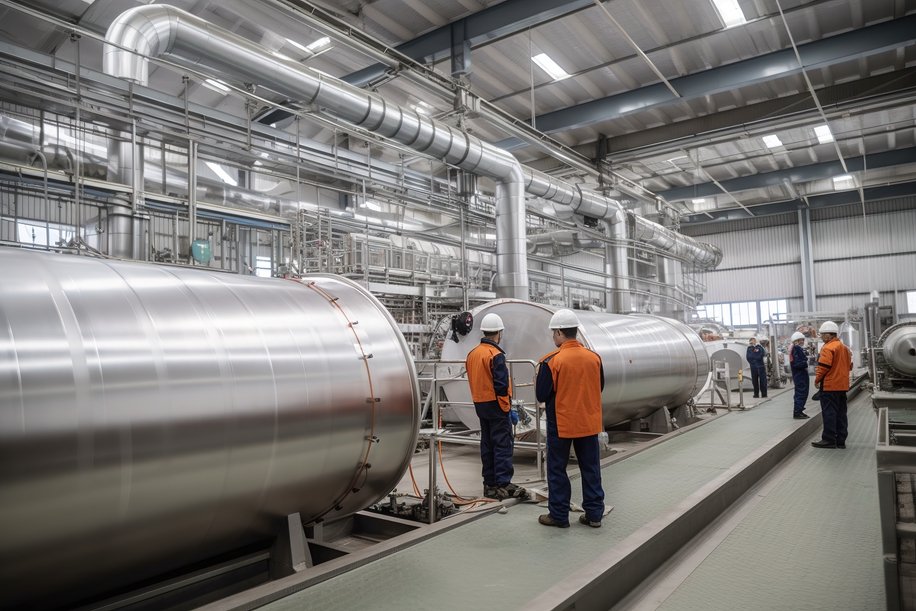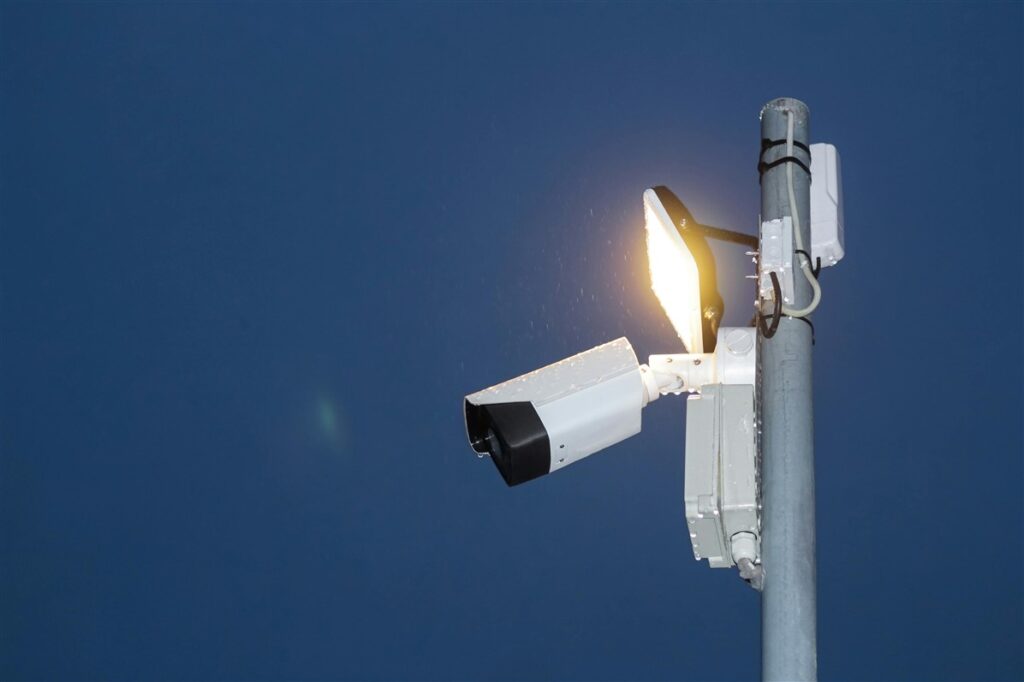What electrical regulations do I need to know about?
We all know health and safety at work is a big deal. Business owners want a clean sheet on safety for many reasons, not least to keep a happy and healthy workforce operating at its best.
In the past fifty years, much has been done to create procedures to support workplace health and safety. From a legal perspective, the government has put legislation in place to ensure employers and their staff have guidelines around best practice health and safety to minimise accidents and injuries.
However, in hazardous environments, we need more than just guidance – we need clear and strict rules to keep our people and plants safe. One of the most serious workplace hazards is electricity, which is why specific regulations exist to manage it safely.
In this article, we're looking at how those regulations apply to you.
Electrical regulations – why they matter
Workplace accidents caused by electricity are among the UK's highest. From electric shocks caused by live wires to machine failures without warning, electrical hazards can lead to severe injuries or, worse, fatalities. It is particularly so in manufacturing, where large industrial machines use electricity around the clock.
Workplace Health and Safety: the basics

All workplace health and safety is covered broadly by The Health and Safety at Work Act 1974.
This sets out the duties of employers and their staff (so far as is reasonably practicable) to uncover and minimise risks.
In industries where hazards are likely, the responsibilities around risk go beyond reasonably practicable and require a meticulous approach to manage them, including a formal risk assessment process.
More recently, the Management of Health and Safety at Work Regulations 1999 clarify how employers can manage risks that significantly impact people's health and safety. Adhering to the regulations is a legal requirement for all UK businesses, including those in manufacturing.
The government-led Health and Safety Executive (HSE) website has lots of information to help employers understand more about safety regulations and their responsibilities regarding managing risk.
Managing electrical equipment and hazards
When it comes to electricity, the government guidance becomes even clearer, with specific statutory regulations employers must adhere to. There are several electrical regulations to be aware of, particularly in a high-risk sector such as manufacturing.
Electricity at Work Regulations 1989
These electrical regulations fall under Section 15 of The Health and Safety at Work Act 1974. Enforced in law by the HSE and local authorities, they are possibly the most critical for employers to understand as they oversee everything electrical at work and have done since coming into force in 1990.
Fully comprehensive, the regulations cover how to approach all aspects of electricity – not only the items drawing power but the wiring, connections and insulators that support safe electrical transmission.
Specifically, these regulations go in-depth into the following areas:
• Systems, work activities and protective equipment
• Strength and capability of electrical equipment
• Adverse or hazardous environments
• Insulation, protection and placing of conductors
• Earthing or other suitable precautions
• Integrity of referenced conductors
• Connections
• Means for protecting from excess of current
• Means for cutting off the supply and for isolation
• Precautions for work on equipment made dead
• Work on or near live conductors
• Working space, access and lighting
• Persons to be competent to prevent danger and injury
As well as comprehensive guidance, the regulations offer suggestions to help businesses act accordingly to stay safe and compliant.
Planning: any installation of electrical equipment must be planned for, with energy sources isolated to ensure a safe environment.
Competence: people working on electrical equipment must be appropriately trained and certified.
Equipment and work standards: machinery must be suited to the job and used in its intended environment.
Maintenance: equipment requires ongoing care, including regular inspection and testing to prevent failure.
Electrical Equipment (Safety) Regulations 2016
As it might sound, this set of regulations applies to electrically-powered machinery and equipment. The guidance has helped businesses to understand their obligations when using or manufacturing electrical equipment since 1994, updated in 2016 to reflect UK law.
Electrical equipment must be deemed safe for use. These regulations give details on what employers must do to ensure this is the case with any equipment used in the workplace by their staff or contractors, such as:
• purchasing items which are manufactured and delivered safely
• ensuring items come with a CE mark to demonstrate EU health and safety compliance (or, from December 31 2022, the UKCA mark)
The regulations apply to all electrical equipment, whether large pieces of machinery operating at a high voltage or smaller hand-held electrical items with a low voltage. The rules replaced previous ones, including the now revoked Low Voltage Electrical Equipment (Safety) Regulations 1989.
Manufacturing companies using any electrical items, large or small, must become familiar with these regulations to avoid unnecessary risk and potential accidents.
Supply of Machinery (Safety) Regulations 2008
This set of regulations applies to any business selling machinery to the UK market.
Many UK manufacturers design and build machinery – some electrical – and if this applies to you, then these regulations are something you must become familiar with.
Central to the regulations is the application of the CE or UKCA mark to any manufactured items. These marks are mandatory in showing that a product meets strict health and safety standards in the UK or Europe.
As of January 1 2021, all machinery produced in the UK, including electrical items, must be UKCA marked to meet UK manufacturing laws. This replaces the EU-derived CE mark, which is still accepted today but will cease on December 31 2022.
The Provision and Use of Work Equipment Regulations 1998
Also referred to as PUWER, these regulations apply to companies operating or controlling work equipment.
The term 'work equipment' is broad, applying to any machinery, tools, installations and appliances. As so many are powered by electricity, this is another set of regulations employers have a responsibility to understand and follow to avoid negligence.
An important note about BS 7671
BS 7671:2022 Requirements for Electrical Installations, IET Wiring Regulations (18th edition) offers guidance about the requirements for the construction and testing of electrical installations.
Unlike the regulations already mentioned, the requirements are not statutory to UK law. But they form a collective code of practice widely recognised and accepted in the UK as compliance with the Electricity at Work Regulations 1989.
The Dangerous Substances and Explosive Atmospheres Regulations 2002 (DSEAR)
In 2002, the government introduced a set of legal requirements for working with hazards in specific environments known as the DSEAR.
DSEAR helps businesses manage and control hazardous substances and hazards that may act as an ignition source. Electricity can act as an ignition source; therefore, electrical equipment used in hazardous areas or explosive atmospheres (ATEX zones) must be used and controlled using a specific series of processes.
Knowing your electrical regulations
Whether you have an in-house team dedicated to managing and maintaining electrical systems and equipment or you use an external provider such as AES, the responsibility remains at the business owner's door in terms of compliance.
Regulations are in place for good reason, and any negligence towards them can prove critical to your business and the safety of your staff. So, if nothing else, get to know your regulations and make sure you and your team are doing everything to follow them.
Protecting your business with AES
AES offers specialist electrical contracting services for the manufacturing industry.
We provide a professional service with a full audit trail to ensure your electrical installations and equipment meet all health and safety guidelines and regulations.
We are also one of a small number of electrical contracting businesses qualified to work in ATEX environments under CompEx accreditation.
Our CompEx accredited team are competent in selecting, installing, inspecting, and maintaining electrical apparatus in potentially explosive atmospheres, in line with the DSEAR.
If you'd like peace of mind that your manufacturing plant meets all health and safety regulations around electricity, contact our team to get started.

Our guide to building energy management systems
Building energy management systems (BEMS) are systems that allow you to monitor, control, and optimise the energy used within your building. The phrase building energy management system (BEMS) is often used interchangeably with the phrase building management system (BMS), but there are some differences. A BEMS is focused on energy-related systems such as lighting, heating, […]
Read more
How far does power travel and what impact does distance have on performance
It’s easy to take our electricity supply for granted. We flick a switch and instantly have light or power. We don’t even think about it unless there’s an issue or an outage. But when there is an issue or outage, the impact can be significant. For manufacturers, even the smallest change in power can make […]
Read more
Why visibility of the production process is so important
Operational excellence, efficiency and quality are top priorities for almost every manufacturer worldwide. These things lead to improved productivity, happier customers and reduced waste – all of which result in increased profits. Visibility of the production process is the key to achieving these things. And manufacturers now have access to technology that can provide real-time […]
Read more
Will security lighting help to protect my staff?
Looking after the safety and well-being of employees should be a priority for any business. And while it’s not possible to mitigate every risk, there are measures you can take to improve their safety and security. One measure that is often overlooked is the installation of security lighting. When daylight disappears, visibility is reduced, increasing […]
Read more
Top 5 considerations when comparing electrical quotes
Budget is always a factor when you’re considering any type of upgrade, revamp, or maintenance work within your factory. But when it comes to electrical work, you have to consider more than just money. Don’t rush into accepting the cheapest electrical quotes without knowing exactly what you’re getting. Electrical work is not an area where […]
Read more
What is the role of companies in reducing our carbon footprint?
We should all be taking responsibility for protecting our planet and a big part of that is reducing our carbon footprint. But while it falls to all of us to do our bit, there is additional pressure on manufacturers, especially those with high carbon emissions. As an absolute minimum, these companies should ensure compliance with […]
Read more

